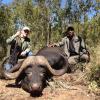Sign in to follow this
Followers
0

Affordable Method of BC Measurement Over Long Ranges
By
nralifer, in Long Range Shooting

By
nralifer, in Long Range Shooting